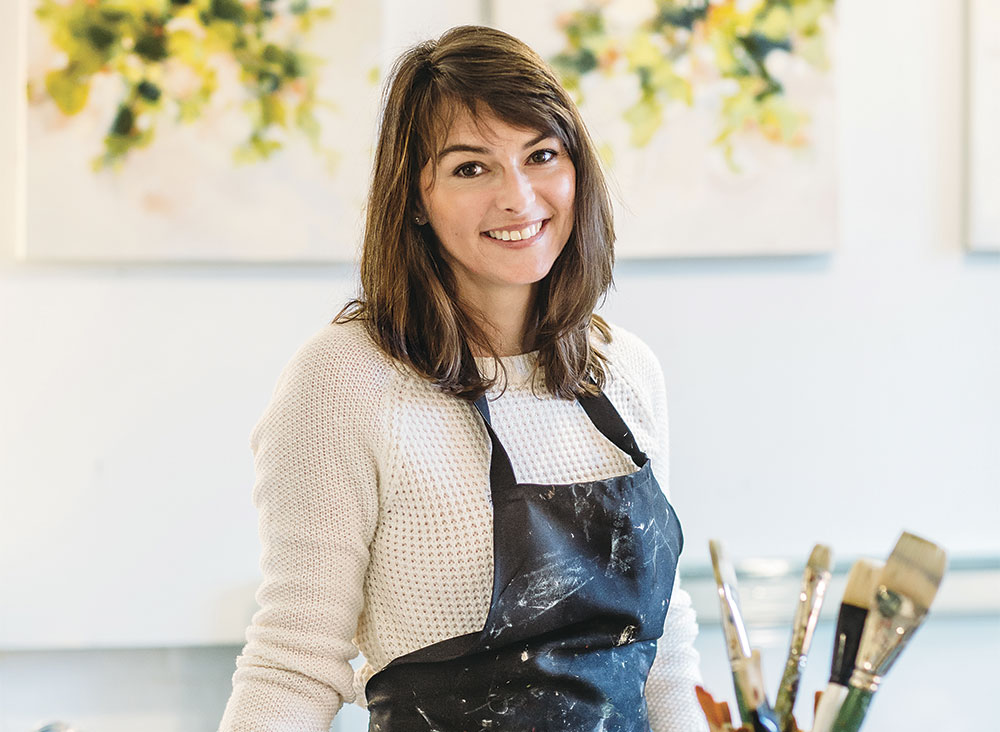
Early one morning ten years ago, Cheyenne Trunnell was driving through the mountains of her native Tennessee, going to visit a beloved grandfather dying of cancer. She stopped briefly to take a photo of the sunrise.
“When I got to the hospital, I showed him the picture,” Cheyenne recalls, “and what he said changed me forever. He said, ‘Oh, I can’t imagine something so beautiful.’ When he passed two days later, I was so sad that he’d spent the last few weeks of his life looking at those desolate hospital walls. Oh, how I wished I’d taken a painting for him to look at!”
Trunnell had been drawing and painting since childhood — but the death of a loved one changed her focus dramatically. Making art had always been a therapeutic pastime for her, but now she saw how her work could provide the same solace for others. The result is a body of impressionistic landscapes suffused with delicately rendered light effects, much in the manner of J.M.W. Turner or Cézanne (Trunnell cites both as influences). “My paintings became very ethereal as I sought light and truth in my despair,” she says. “My art became how I grieved for the loss of my grandfather.”

The first exposure to contemporary art came early on for the 39-year-old painter, who’s been based in the River Arts District since moving to Asheville twelve years ago. She had been making drawings since childhood, when, at age 12, she was introduced to a friend’s uncle, an abstract artist. “I was fascinated by [his] painting,” she recalls. “By the time I was in high school, I’d painted my first landscape.”
In college, Trunnell discovered a passion for psychology equal to her attachment to making art, and landed on art therapy as a way to marry the two, receiving her Masters in the field from George Washington University and going on to teach teenagers at an alternative high school in Virginia. “It was amazing to see how these troubled teens could work through the hard trials of life in my art room,” says Trunnell. “It was a rewarding job, but not one I could emotionally continue once I married and had children of my own.”
The absence of a family member as deeply loved as her grandfather and the grieving that followed became a transformative point in her career, deepening her understanding of art as a therapeutic tool. “For several years, all I could paint were memories of my time with ‘Paps,’” she says. “It was how I remembered, how I healed, how I survived the days when the pain was so heavy and I was trying to care for a newborn and a two-year-old.”
But at the end of that dark period lay something new, as she decided to pay her experience forward. She began placing her work in hospitals and cancer-treatment centers, while her painting became less figurative and more ethereal. “My goal suddenly became to bring light, peace, and hope of eternal joy into my paintings,” she says. “I began to focus on capturing the light within nature. I tried to express those moments in time when all is quiet on a trail in the woods and the very presence of God seems so near. My work became more about bringing a sense of peace into view than about the actual subject itself. Sometimes the process is more important than the product.”
Although she works spontaneously on the canvas — “following the brush,” as she puts it — the palette she prepares for each work is carefully planned: “It’s the one thing I never leave to chance … I research and plan my palette for days before starting a new painting. Color theory is fascinating to me: I love how colors relate to each other.”
She favors soft blues, greens, and browns in much of her work, laid on the canvas in a light impasto supported by a luminous white. She often refers to the Bible as she works, culling inspiration from scripture and a deep faith in spiritual healing. “My paintings, in a sense, became how I pursue God daily,” she says. “I want so much for my work to offer a glimpse of that peace.”
To view Cheyenne’s work online or arrange a studio tour, visit cheyennetrunnell.com.

Awesome featured work and approach to your journey as an artist. Your passion to help patient’s find peace and healing is delightful. I will try to check out the River Art District the next time I visit Asheville.